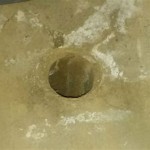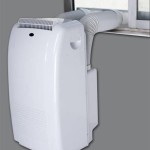What Does A Basement Sump Pump Do?
A basement sump pump is a critical component of a home's water management system, particularly in areas prone to flooding or with high water tables. Its primary function is to prevent water from accumulating in the basement, safeguarding the property from water damage and associated problems like mold growth, structural issues, and damage to personal belongings. Understanding the sump pump's operation and its role in maintaining a dry and healthy basement environment is essential for homeowners.
The term "sump pump refers to a pump specifically designed to remove accumulated water. The system typically involves a sump, which is a pit or basin dug into the basement floor, usually in the lowest point. This sump acts as a collection point for water that seeps in from the surrounding soil or enters due to leaks or flooding. The sump pump sits within this pit and is activated when the water level reaches a predetermined height. Once activated, the pump expels the water away from the foundation of the house, preventing it from rising and flooding the basement.
Sump pumps are not a luxury, they are often a necessity, especially in regions with heavy rainfall, snowmelt, or poorly draining soil. Even homes not directly adjacent to bodies of water can benefit from a sump pump if they are situated in areas with high water tables. A high water table means the level of groundwater is close to the surface, increasing the likelihood of water seeping into the basement. Failure to address this water intrusion can lead to significant structural damage and health hazards for the occupants.
Preventing Basement Flooding
The central function of a sump pump is to prevent basement flooding. This is accomplished by actively removing water that accumulates in the sump pit before it can reach a level that causes damage. Several factors contribute to water accumulation in basements, including hydrostatic pressure, surface water runoff, and plumbing leaks. Hydrostatic pressure is the force exerted by groundwater against the basement walls and floor. This pressure can force water through cracks and porous materials, leading to seepage. Surface water runoff from rain or snowmelt can also overwhelm the soil's absorption capacity, causing water to pool around the foundation and eventually seep into the basement.
Furthermore, plumbing leaks from broken pipes or malfunctioning appliances can contribute to water accumulation. A sump pump effectively mitigates these risks by constantly monitoring the water level in the sump pit and initiating the pumping process whenever necessary. The timely removal of water prevents the water level from rising to a point where it can damage finished walls, flooring, furniture, and stored items. By proactively managing water accumulation, a sump pump safeguards the structural integrity of the basement and prevents costly repairs.
The impact of basement flooding extends beyond mere inconvenience. It can lead to the destruction of valuable possessions, the disruption of daily life, and the potential for serious health problems. Furniture, electronics, and personal documents can be irreparably damaged by water exposure. Moreover, the process of cleaning up after a flood can be time-consuming, laborious, and emotionally draining. A sump pump provides peace of mind by minimizing the risk of such devastating events, allowing homeowners to feel secure in their properties.
Protecting Structural Integrity
Beyond preventing immediate flooding, a sump pump plays a crucial role in protecting the structural integrity of the foundation and the overall stability of the house. Constant exposure to moisture can weaken the concrete and other materials used in the foundation, leading to cracks, shifting, and eventual collapse. The presence of water also contributes to the corrosion of metal components, such as support beams and pipes, further compromising the structural integrity of the building. Over time, these issues can become extremely costly to repair and may even necessitate extensive foundation work.
By removing water from around the foundation, a sump pump alleviates hydrostatic pressure, reducing the strain on the walls and preventing the formation of cracks. It also helps to maintain a drier environment, minimizing the risk of corrosion and deterioration of building materials. This proactive approach to water management extends the lifespan of the foundation and prevents the need for expensive structural repairs in the future. In essence, a sump pump acts as a long-term investment in the structural health of the home.
The detrimental effects of water damage can propagate beyond the foundation itself. Moisture intrusion can compromise the stability of the soil surrounding the foundation, leading to settling and shifting of the house. This can result in uneven floors, cracked walls, and sticking doors and windows. A sump pump helps to maintain stable soil conditions by preventing excessive moisture buildup, thus preserving the overall stability of the entire structure. In areas prone to soil erosion or landslides, this function is particularly critical for ensuring the long-term safety and stability of the property.
Preventing Mold and Mildew Growth
One of the most significant benefits of a sump pump is its ability to prevent mold and mildew growth in the basement. Mold thrives in damp, dark environments, and a flooded or consistently damp basement provides the ideal breeding ground. Mold growth can lead to various health problems, including allergic reactions, respiratory issues, and skin irritation. Certain types of mold, such as Stachybotrys chartarum (black mold), can produce mycotoxins, which are toxic substances that can pose serious health risks. Eliminating or significantly reducing moisture is critical to preventing mold growth.
A sump pump effectively controls moisture levels in the basement by promptly removing any standing water. This prevents the formation of damp spots and reduces the humidity, creating an unfavorable environment for mold and mildew to thrive. By maintaining a dry basement, the sump pump significantly reduces the risk of mold infestation and protects the health of the occupants. This is particularly important for individuals with allergies, asthma, or other respiratory sensitivities.
The process of remediating mold growth can be expensive and disruptive. It often involves the removal of contaminated materials, the cleaning and disinfection of affected areas, and the implementation of measures to prevent future growth. A sump pump provides a cost-effective and proactive solution to prevent mold growth in the first place, saving homeowners the expense and hassle of dealing with mold remediation. Moreover, it contributes to a healthier and more comfortable living environment by eliminating the source of unpleasant odors and allergens associated with mold growth.
In addition to directly preventing mold growth, a sump pump can also indirectly contribute to improved air quality throughout the house. Mold spores can easily circulate through the air, spreading from the basement to other areas of the home. By controlling mold growth in the basement, a sump pump reduces the number of airborne mold spores, improving the overall air quality and creating a healthier living environment for all occupants. This is particularly beneficial for individuals who spend a significant amount of time indoors.
Regular maintenance of the sump pump is essential to ensure its continued effectiveness. This includes checking the pump's operation, cleaning the sump pit, and inspecting the discharge line for any obstructions. A properly maintained sump pump will provide reliable protection against water damage, mold growth, and structural issues, contributing to a safer and healthier home environment.

Sump Pumps How They Work Types And More Square One

What Is A Sump Pump And How Does It Work Isn

What Is A Sump Pump And How Does It Work Isn

A Guide To Proper Sump Dump Discharge Basement Defender

Basement Sump Pumps Zoeller Pump Company

What Is A Sump Pump And How Does It Work Fresh Water Systems

Prevent Basement Flooding The Role Of Sump Pumps In Water Management Dry Foundation Repair

How To Check Your Sump Pump Prime Plumbing

Know Your Sump Pump Jake The Plumber

Sump Pump Plumbing Elek
Related Posts







